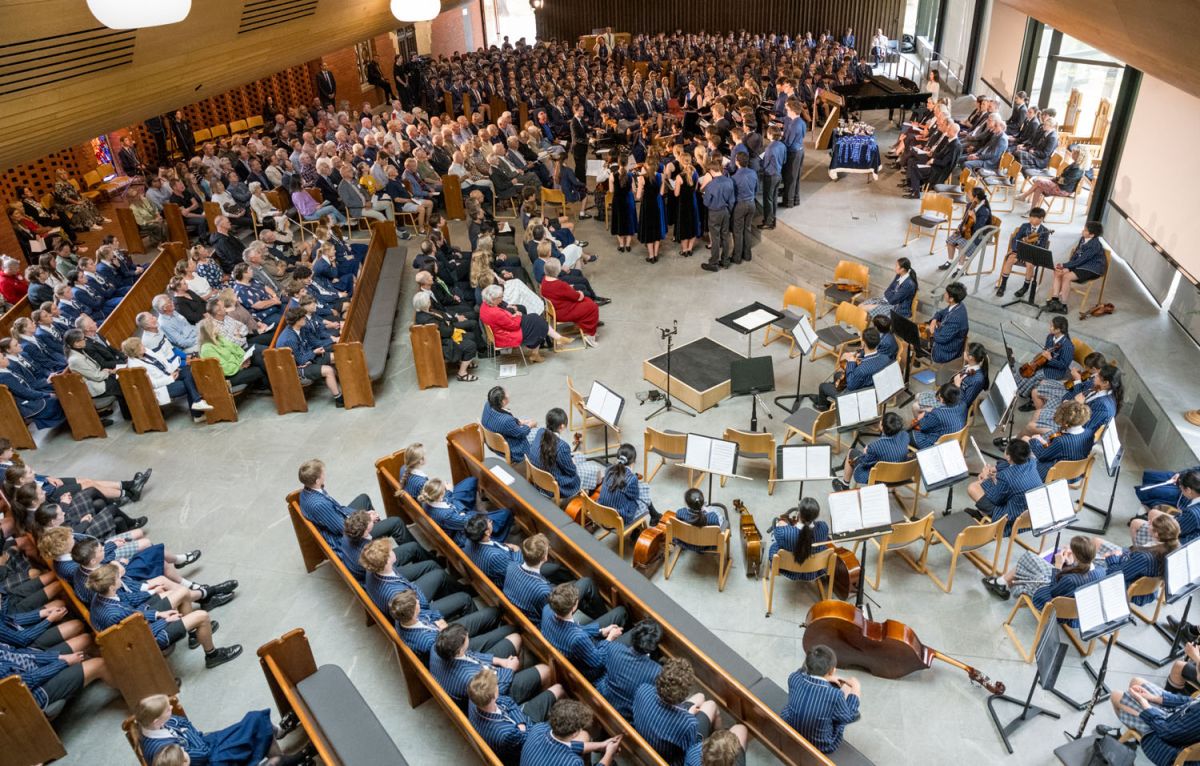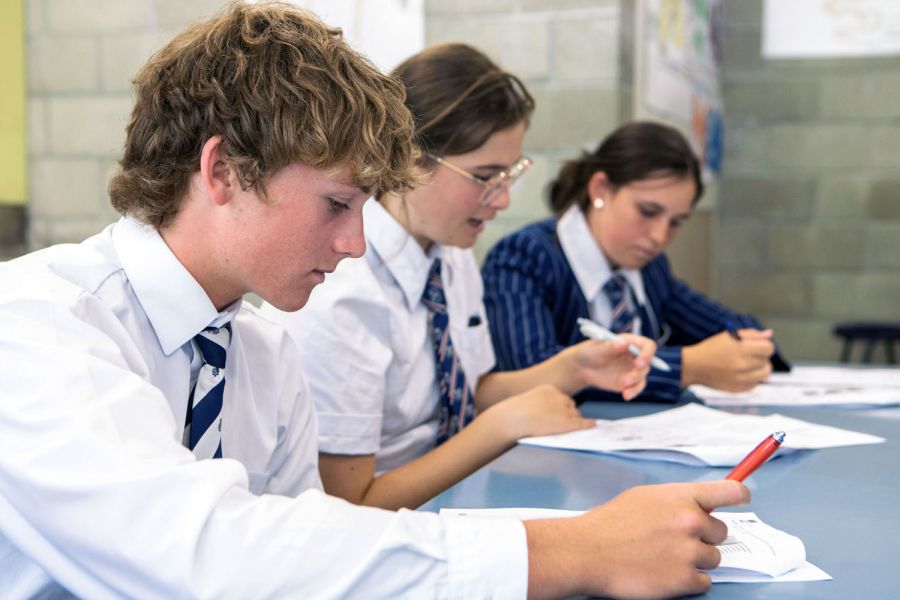The Importance of Community
19 September 2024
Written by Head of Well-being, Kerry Larby
Next week, as we celebrate Mental Health Awareness Week, organised by the Mental Health Foundation, we turn our attention to an essential yet often overlooked aspect of well-being: community. This year’s theme, "Community is… what we create together," resonates deeply. Research from the Mental Health Foundation following Cyclone Gabrielle and other weather events in 2023 revealed a key insight: community is the key to getting through tough times. This finding aligns with my own experiences as part of the St Andrew’s community, reinforcing the profound role that community plays in mental health.
Why does community matter?
The interconnectedness of human beings is a well-documented phenomenon, supported by evolutionary, neurological, biological, and psychological research. U.S. Surgeon General Vivek Murthy highlights in his book Together: The Healing Power of Human Connection in a Sometimes Lonely World that our physical and mental health is significantly influenced by our social interactions. Murthy argues that fostering connection is as critical to our health as addressing smoking, obesity, and other major risks.

Neuroscientist Matthew Lieberman reinforces this point, stating, "Human beings are social creatures — not occasionally or by accident but always. Sociability is one of our lives’ driving forces." This inherent drive for connection is particularly acute during adolescence, a period marked by intense social development. Brené Brown, a leading researcher on vulnerability and connection, emphasises that a deep sense of love and belonging is fundamental to our well-being, affecting every facet of our existence. According to Brown, “We are biologically, cognitively, physically, and spiritually wired to love, to be loved, and to belong” (Brown, 2010).
During my time at St Andrew’s, I have seen first-hand how important community is for building and sustaining resilience. The power of community has been a theme running through St Andrew’s fascinating history. In the 1930’s families organised a school fair to raise funds as the school was struggling to stay afloat during the depression. In 1953, our community came together for a massive fundraising effort to fund the building of our original chapel commemorating the 63 Old Collegians who fell in World War Two. This was achieved through school events, donations and working bees. Our community’s ability to support each other through stress and adversity—be it earthquakes, global pandemics, or loss—demonstrates the resilience fostered by strong communal bonds and support. Community matters when we navigate tough times.

At the same time, our community is there to encourage, affirm and celebrate when things go well. Some of my fondest memories have been witnessing the collective joy and positive reinforcement provided by our community when things go well. Being part of the rowing community when St Andrew’s won the Maadi Cup in 2017 is a particularly fond personal memory but I also reflect on sitting in the assembly hall as it erupts in joy, applause and laughter. The great thing about joy experienced in a group setting is that it can spread through the crowd. Emotions are contagious. In a community, the positive emotions of one person can influence and elevate the emotions of those around them. Positive feedback from the collective builds hope, and confidence.
Contributing to the StAC community provides many of us with a sense of meaning and purpose. It’s about playing a part in supporting the holistic development of young people- building better people, for life. This connection to a larger purpose is essential for our well-being, as it fosters a sense of belonging and significance beyond ourselves.

Our community also provides valuable opportunities for personal growth and learning. By engaging with individuals who both share and challenge our values, experiences, and perspectives, we enhance our understanding and develop. Collaborating with others helps us tackle challenges, broaden our perspectives, and move towards achieving our goals. Our focus on character strengths at St Andrews gives us a shared language to appreciate the diverse qualities that each person brings to our community. The most vibrant communities are those that celebrate and harness their diversity to enrich collective well-being. Every person has a contribution to bring.
How do we build community?
At St Andrew’s, we are committed to building a connected community that supports the well-being of our students. Building such a community involves more than mere belonging; it requires active and meaningful engagement. Here are some of my thoughts on what creates a connected community.
1. Shared Purpose and Vision: Community thrives when united by a shared purpose. A clear vision and common values foster a sense of belonging and mutual understanding. As futurist, Brian Solis, eloquently puts it, “Community is much more than belonging to something; it’s about doing something together that makes belonging matter.” At our school, this shared purpose drives us to collaborate and support one another in achieving our collective goals.

Trust: Trust is the cornerstone of a thriving community. It is cultivated through small, consistent, reliable, and kind interactions. Students learn about the importance of trust in building meaningful relationships through our health curriculum.
Empathy and Compassion: Empathy is the starting point for creating a community and taking action. It enables us to connect with others' experiences, while compassion transforms this understanding into supportive action. These principles are central to our pastoral program, where we encourage students to show care and kindness, reinforcing the importance of a nurturing environment.
Open-mindedness and Humility: Our community is enriched by its diversity. Open-mindedness allows us to embrace varied perspectives, while humility reminds us of our limitations in understanding others or the big picture fully. By remaining open to learning from each other, we foster an environment of collaboration and growth.
Inclusivity and Diversity: Inclusivity is one of our whole school core values. It ensures that all voices are heard and valued, creating a richer exchange of ideas and fostering mutual respect. In every aspect of school life, we aspire to create a space where individuals feels a sense of belonging.

The importance of community for connection and support is a value that is universal, spanning diverse cultures. The Māori concept of whanaungatanga focuses on the interconnectedness of individual and collective well-being, highlighting the importance of strong, supportive and reciprocal relationships. Similarly, the Pasifika value of va fealoa’i emphasises the sacred nature of relational spaces, advocating for respect and nurturing within our connections. I have always loved the African philosophy of Ubuntu, which translates to "I am because we are."
Our mental health and well-being are deeply intertwined with how we engage with and care for those around us. It’s essential for young people to understand that community is built on mutual respect, empathy, and shared responsibility. By embracing inclusivity and recognizing that everyone has something valuable to contribute, regardless of background or identity, they can foster stronger connections. Learning the importance of service, cooperation, and active participation helps students discover a sense of purpose beyond themselves and provides them with the support network they need to navigate life’s inevitable challenges.

As we reflect on the importance of community for Mental Health Awareness Week, it’s important to remember that living a connected life begins with the decisions we make in our day to day lives:
What small acts of kindness or inclusion can we offer to deepen others' sense of belonging?
Do we seek out others with kindness?
Do we recognise the power of service to bring us together?
How can we actively listen to others to foster a sense of understanding and connection?
Related Posts


